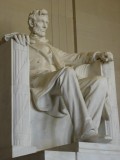Chapter Review: "Is Affirmative Action a Second Wrong?"

In Is Affirmative Action a Second Wrong? (Gary E. Kessler, Voices of Wisdom: A Multicultural Philosophy Reader, 4th ed, Belmont, CA; Wadsworth/Thomson Learning, 2001, 245-250), Kessler argues that affirmative action is not a policy of “reverse discrimination.”
Kessler, instead of beginning with examples that support his thesis, first lays out the key arguments of the critics of affirmative action. Some critics believe that the policy “excludes well-qualified white men from jobs, promotions, college admissions, graduate programs, and opportunities to enter professions based solely on their race and gender.” (245.). Other critics infer that the policy works to ‘the disadvantage of many women or members of various ethnic groups who are not favored by affirmative action” (246). He describes the final argument of critics as “two wrongs do not make a right” because a large number claim it is just as wrong to discriminate in favor of minorities, and that the same injustice is done (247).
Kessler supports his thesis in a number of ways. He finds fault with the critics’ allegations, stating they rarely have any sort of evidence to back up the claim of ‘reverse discrimination.’ Attempting to explain the purpose of affirmative action, he notes that the policy requires that “an organization examine its outreach efforts’ to ensure the advertising reaches minorities and that the job criteria are “functionally related to the ability to do the job.” He also reminds us that the Equal Employment Opportunity Commission (EEOC) guidelines never required quotas, only goals and timetables, when under-representation of women or other classes had been demonstrated (246).
Kessler provides several examples where affirmative action has worked and is, in fact, encouraged, including the U.S. Chamber of Commerce, Pacific Gas & Electric, and a Dow Chemical factory. He has quoted them as saying, “it’s the right thing to do and makes good business sense” (249). The businesses want to be good citizens and are committed to diversity in the workplace.
The author uses several analogies in order to make his point even clearer. He points out the hypocrisy in the theory of ‘two wrongs do not make a right.” People (professionals and laymen) use that excuse when it suits them. According to Kessler, no one has accused police of ‘reverse shooting” when they fire at a bank robber who has shot customers and no one has called firefighters who set back fires to stop the rush of a forest fire “reverse arsonists.” Indeed, his best analogy is the one about the insurance industry, where the public agrees to pool; liability and that realizing that there are those who are actually harmed by accident…need help. “Through the insurance business, society has found an acceptable way of sharing risks and responsibility; therefore, we should do no less when it comes to affirmative action policies (248).
His purpose is to dismiss the idea that affirmative action is reverse discrimination although he admits it is an imperfect system: “It is a response to deeply rooted patterns of social, political, economic, and cultural oppression” (250). The intended audience appears to be the public, but the emotional tone of the essay is most certainly directed at opponents of affirmative action.
Do you believe affirmative action programs are necessary in the 21st Century?
Where are affirmative action programs most appropriate?
U.S. Department of Labor Requires Affirmative Action
- U.S. Dept of Labor & Affirmative Action
Affirmative actions include training programs, outreach efforts, and other positive steps.
What is affirmative action?
According to the U.S. Department of Labor, affirmative action is "for federal contractors and subcontractors (which) must be taken by covered employers to recruit and advance qualified minorities, women, persons with disabilities, and covered veterans. Affirmative actions include training programs, outreach efforts, and other positive steps.
Misconceptions about Affirmative Action
Affirmative action is often misunderstood. It is not about establishing quotas, which is unconstitutional (See Regents of the University of California v. Bakke, 438 U.S. 265 (1978). Rather it is about increasing the encouragement of the representation of women and minority members in business, housing, and education. Difficult as it may be to accept, in America, according to state-sanctioned policy and law, women and minority groups were denied the rights of citizenship (i.e. voting rights) and opportunities to own property, receive an education, or gain employment until last third of the 20th Century. While some gains have been made in representation, there are still many examples of discrimination in these areas against these groups of citizens.
My Opinion
Affirmative action is one of the most controversial issues today. It is my opinion that the disagreement mainly comes from those who do not know the definition of the policy. I feel that Mr. Kessler should have somehow mentioned Title VII of the Civil Rights Act and the necessity of the affirmative action policies, which followed the statutes. Any truly effective argument, for or against affirmative action, cannot dismiss a reference to the government sanction of racism and the historical significance of discrimination in our country and the failure of businesses, organizations, and government agencies to comply with the law. That is the basis if the additional policy.
I agree with Kessler’s analogy of the insurance business. Kessler makes an excellent link with society’s willingness to pool liabilities and its realization there are many hurt people who need the help. To suggest there is no need for affirmative action policies to suggest that discrimination and racism are longer weaved within the fabric of our society, which is not the case.
It is unfortunate that a policy as important as affirmative action is being shoved aside due to lack of understanding; and the rhetoric that surrounds it further weakens its importance. Kessler’s essay “Is Affirmative Action a Second Wrong” should be an assigned reading. It is an excellent discussion topic for students in Introduction to Philosophy and those in any program, which emphasizes multiculturalism.
By Liza Lugo, J.D.
Copyright © 2012, Revised 2014. All Rights Reserved.
Ms. Lugo retains exclusive copyright and publishing rights to all of her articles and photos by her located on Hub Pages. Portions of articles or entire content of any of these articles may not be used without the author's express written consent. Persons plagiarizing or using content without authorization may be subject to legal action. The articles by Ms. Lugo regarding legal issues are purely academic in nature and do not constitute legal advice. For advice on legal matters, consult a licensed attorney in your jurisdiction.
Permission requests may be submitted to liza@lizalugojd.com.



![Controversies in Affirmative Action [3 volumes]: 3 volumes](https://m.media-amazon.com/images/I/41cRm2rrQCL._SL160_.jpg)







